Archaeology & History
Dig It! Here Are 12 of the Most Astounding Archaeological Discoveries of 2023
Where were you when they found that picture of pizza at Pompeii?
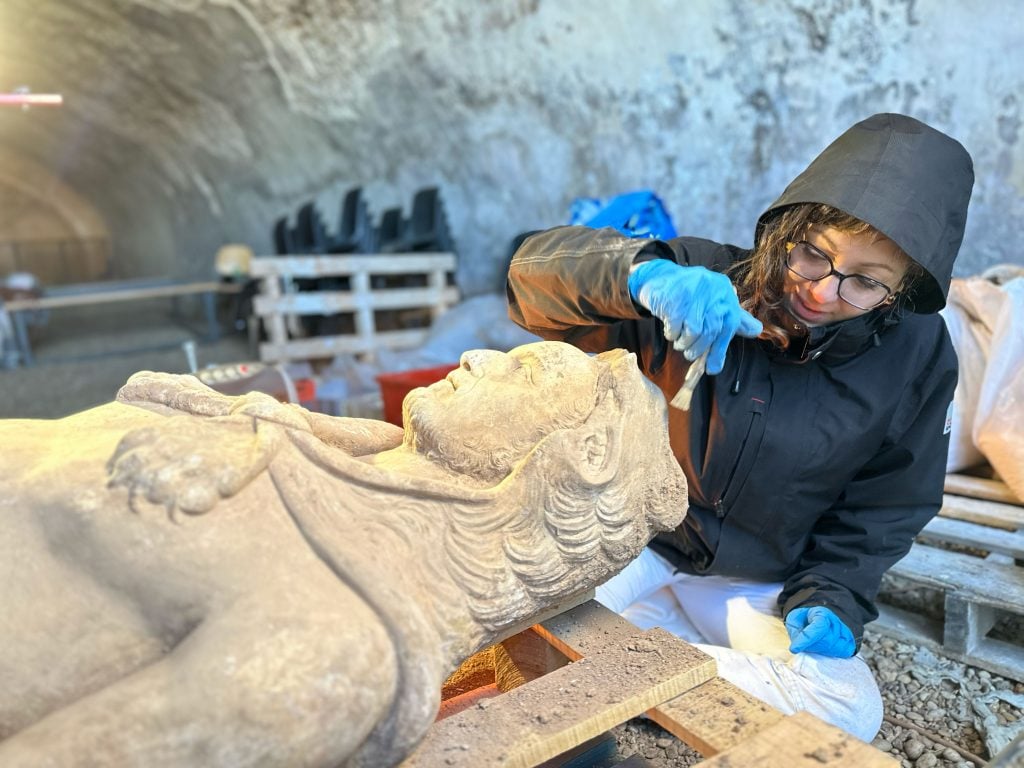
Where were you when they found that picture of pizza at Pompeii?

Artnet News

Looking back at 12 months’ worth of archaeological discoveries is learning that what’s old—really old, in fact—can be new again.
Over 2023, Artnet News has covered the discovery of relics, shipwrecks, coin caches, cave art, burial sites, personal artifacts, and at least one infamous Roman theater, all of which have refreshed our understanding of how ancient peoples lived. Many of these finds were made by archaeologists and experts, but others also came by way of metal detectorists (a lot of them), amateur sleuths, and even people just trying to remodel their kitchen, proving that you don’t have to dig very far to stumble upon layers of history.
Here, we have rounded up 12 of the year’s most astonishing discoveries so you can revisit what’s new with the old.
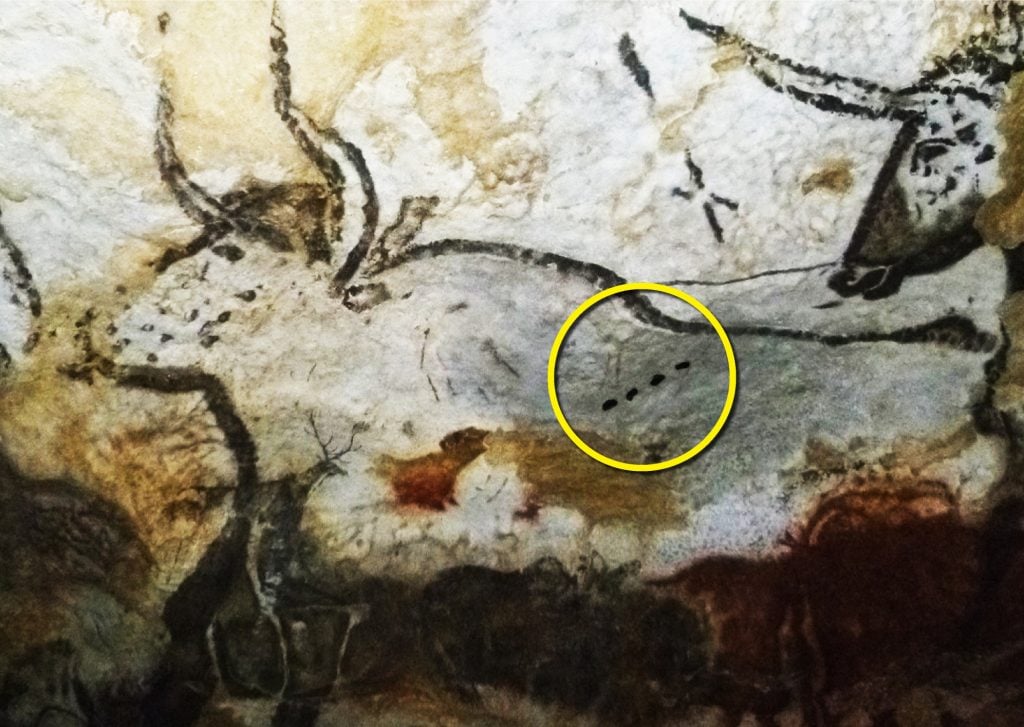
Annotated photo highlighting a sequence of four dots on an aurochs (wild cattle) bull that was painted on the wall of Lascaux Cave (Dordogne, France) around 21,500 years ago. Photo: JoJan.
“Perhaps most remarkably, this sophisticated “proto-writing” system predates any others that are believed to have existed in the Near Eastern Neolithic period by at least 10,000 years.”
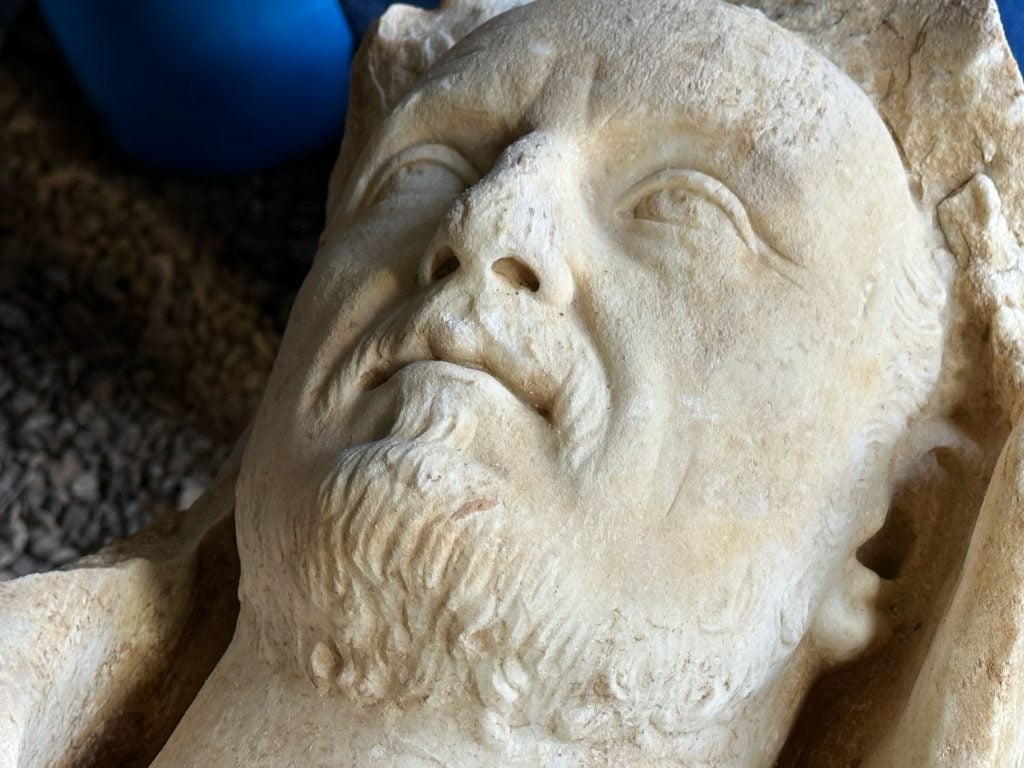
Workers discovered this life-size marble Hercules statue buried in a sewer pipe beneath the Appian Way. Photo courtesy of the Parco Archeologico dell’Appia Antica, Rome.
“Experts at the archaeological park have developed a theory that the statue may be a depiction of the Emperor Gaius Messius Quintus Traianus Decius, or Decio Traiano, based on the work’s wrinkled face and its likeness to known coins featuring the visage of the ruler, who was in power from 249 to 251.”
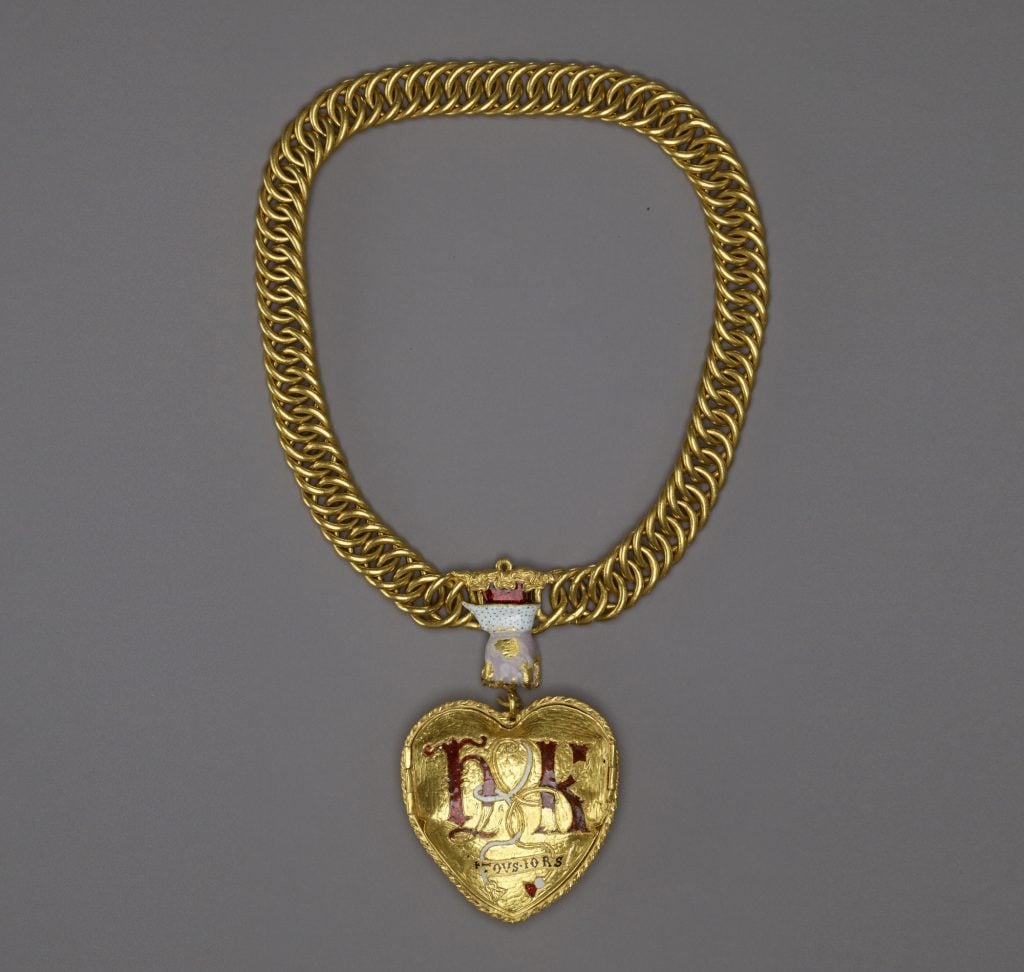
Gold chain with pendant associated with Henry VIII and Katherine of Aragon (c. 1521). Photo: © The Trustees of the British Museum.
“A study by the museum has found that the artifact dates to about 1521, likely created in honor of Henry VIII’s first marriage, which lasted from 1509 to 1533… On the reverse of the object, the letters ‘H’ and ‘K’ have been inscribed in red and white enamel, in Lombardic script with decorative lacing common throughout the 16th century.”
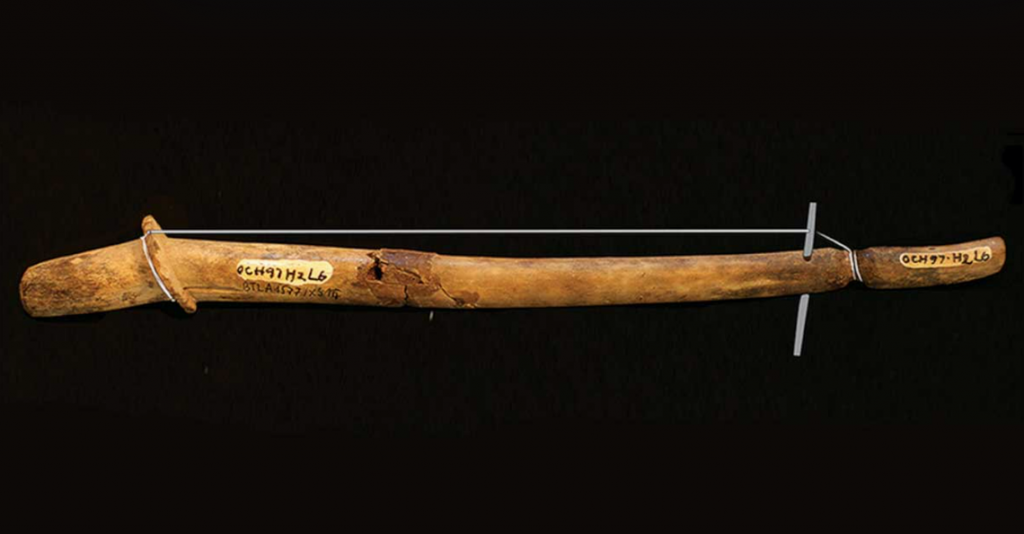
A reconstruction of the chordophone, crafted out of deer antler. Photo: Antiquity (2023). DOI: 10.15184/aqy.2022.170.
“After conducting further ethnographic studies, the team now believes the artifacts to be early chordophones, a class of stringed instruments, encompassing zithers and monochords, which have played vital roles in the country’s millennia-old court and traditional musical practices.”
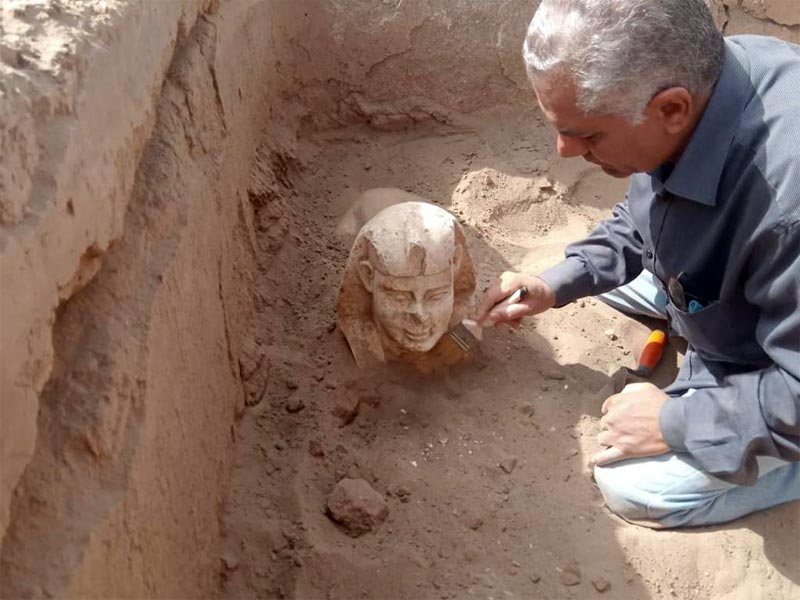
The Roman-era mini sphinx discovered at the Dendera Temple Complex in Egypt. Photo courtesy of the Egyptian Ministry of Tourism and Antiquities.
“The diminutive Roman-era statue hails from the Dendera Temple Complex in Qena. It may represent the Roman Emperor Claudius, in power from the year 41 to 54, the Egyptian Ministry of Tourism and Antiquities announced in a statement.”
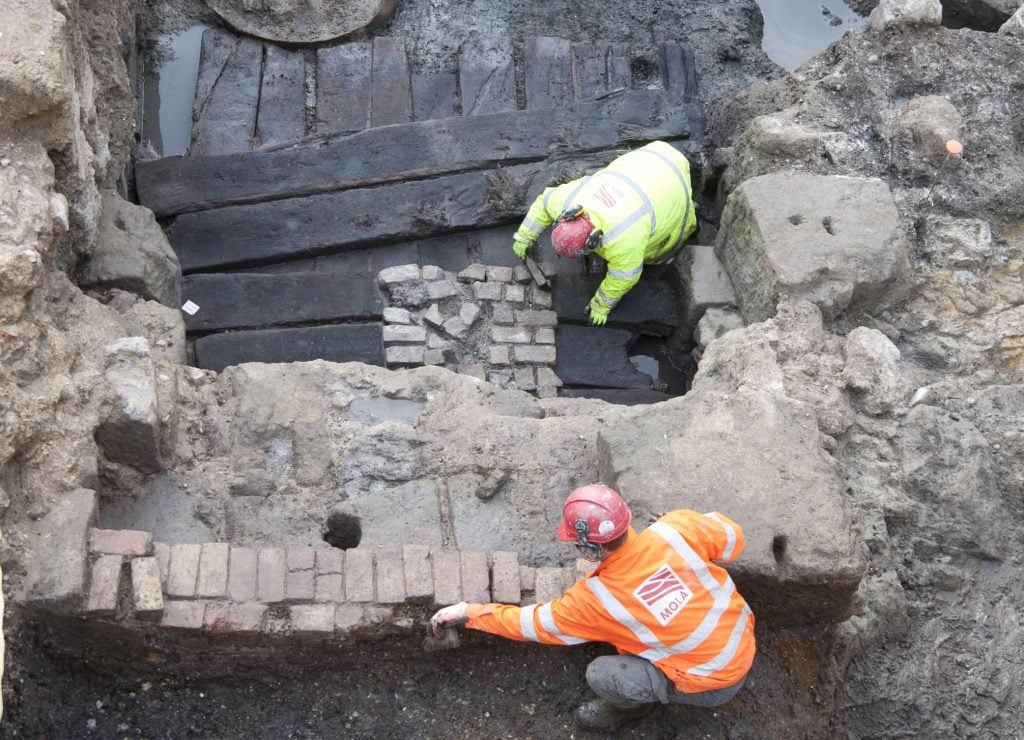
MOLA archaeologists clean the top of the Roman riverside wall at Sugar Quay. Photo: MOLA
“These newly excavated sections measure a total of 330 feet, and are located by the Riverbank House on Upper Thames Street, as well as Sugar Quay and Three Quays on Lower Thames Street. They are providing insights into period masonry and the broader architecture in Roman London.”
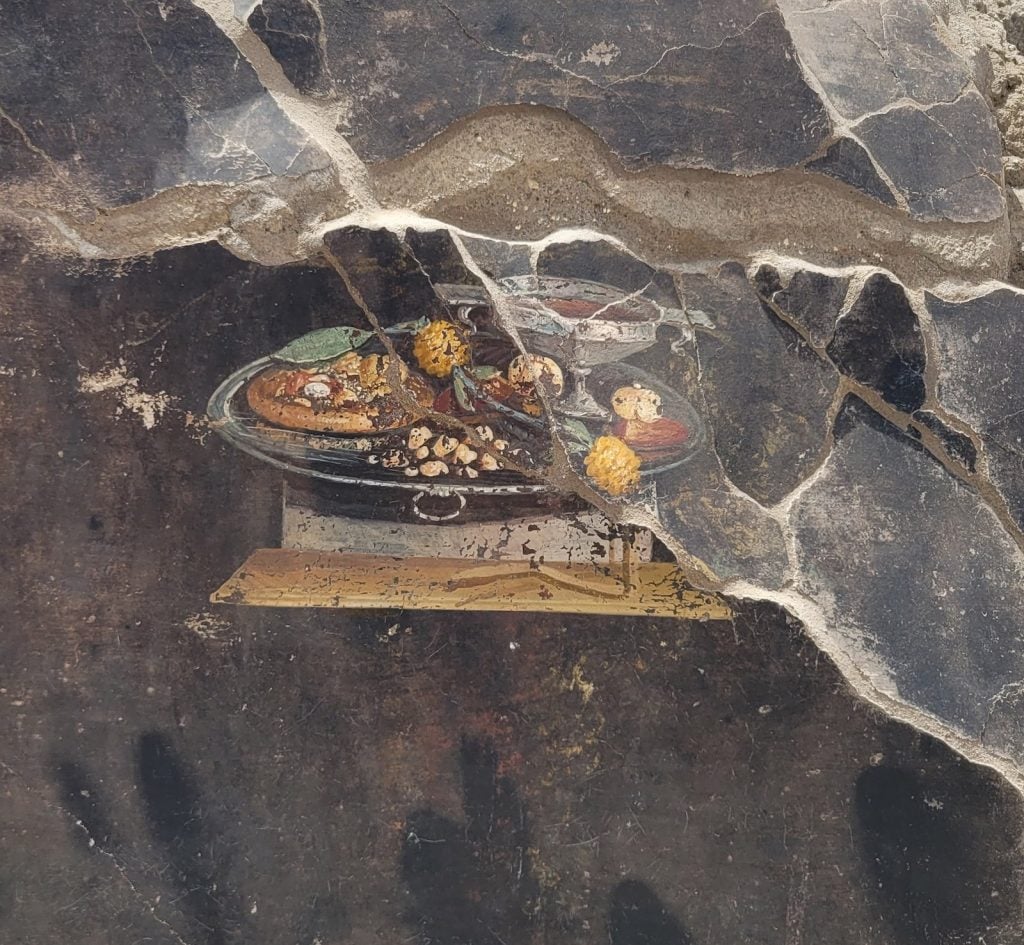
Courtesy Pompeii Archaeological Park.
“A still-life painting of flatbread adorned with toppings has been discovered on the atrium of an ancient Pompeiian house. It looks a lot like a pizza, experts have pointed out, but it can’t be, because tomatoes and mozzarella cheese hadn’t come on the scene yet.”
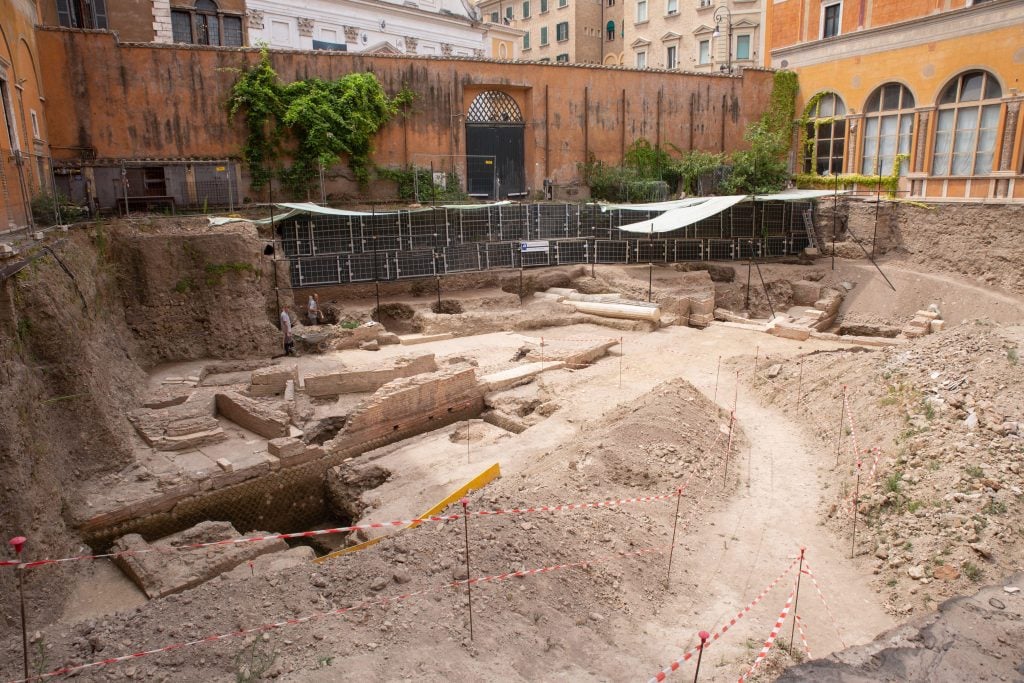
View of the archaeological excavations of Theater di Nero, inside the internal courtyard of the Palazzo della Rovere. Photo: © Matteo Na.
“Tacitus’s writings further suggest that Nero sang at the theater during the Ludi Juvenales scenic games, and more notoriously, watched Rome burn from its vantage point in 64 C.E.”
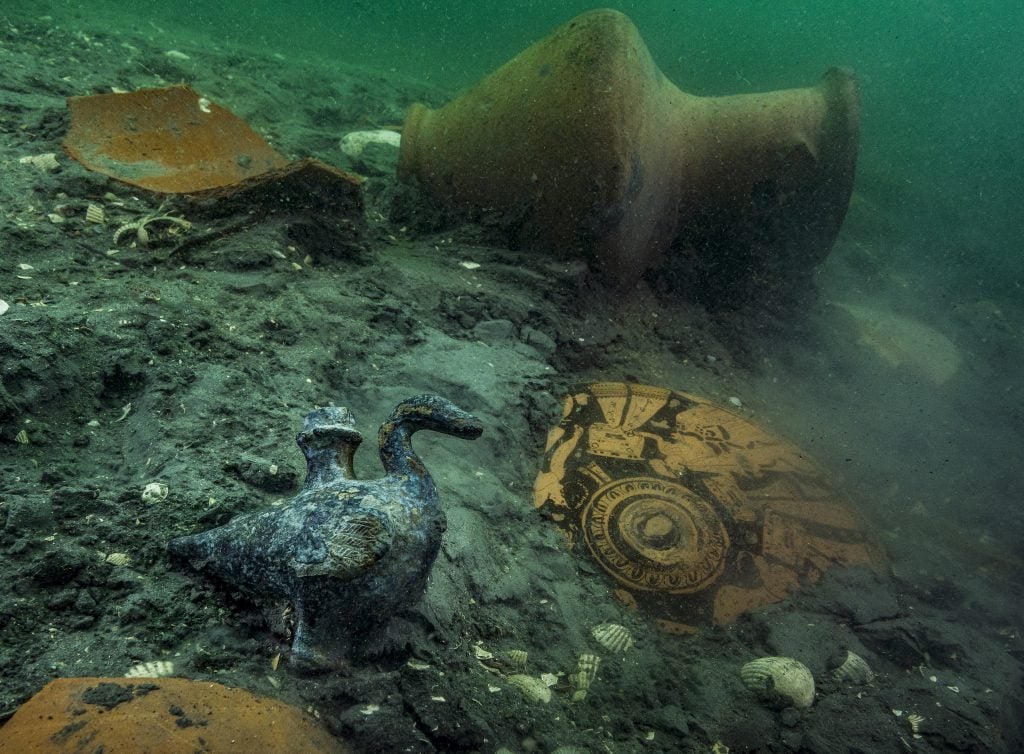
A delicate bronze duck-shaped pourer is discovered amongst ceramics of the 4th century B.C.E. on the site of a newly discovered Greek sanctuary to Aphrodite in Thonis- Heracleion. Photo by Christoph Gerigk ©Franck Goddio/Hilti Foundation.
“The recent excavations have yielded a wealth of precious objects from the temple treasury, including silver ritual instruments, gold jewelry, and alabaster jars that would have held for perfumes.”
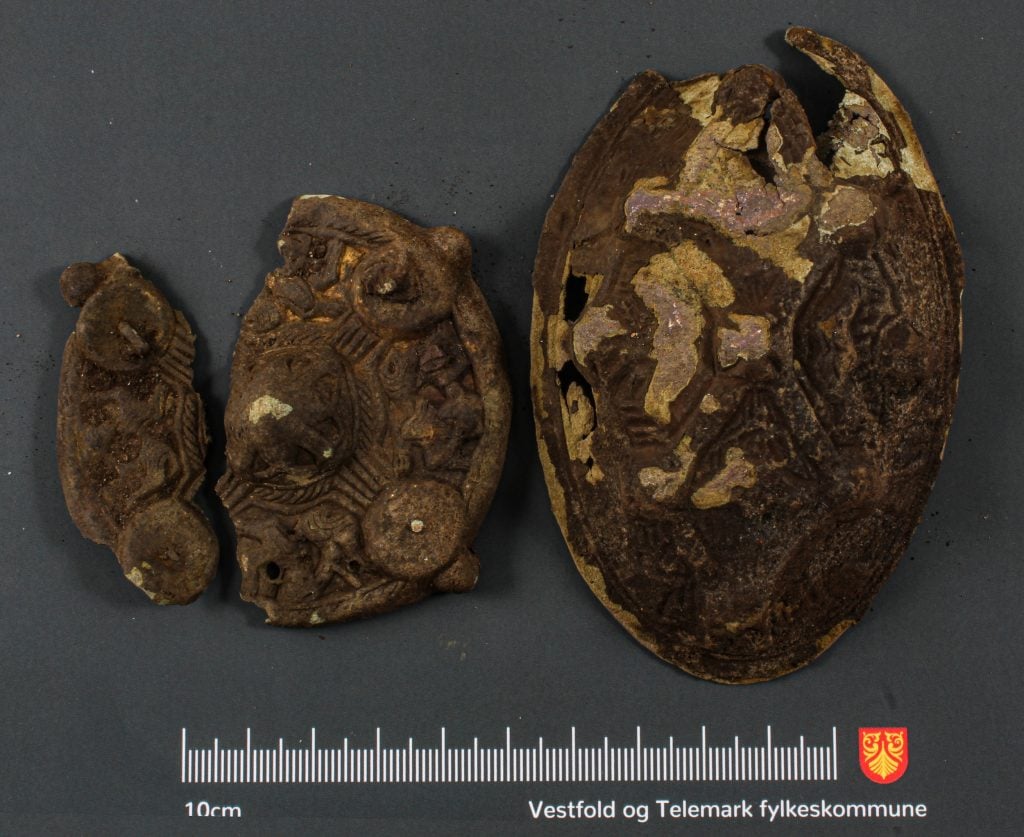
The two Viking-era brooches. Photo: Courtesy of Rune Nordseter.
“’I took the spade and started digging,’ Jan Erik Aasvik told Norweigan news outlet Kragerø Vestmar. ‘I was probably no further down than about 20 to 30 centimeters. I didn’t understand what it was, but it looked old.’”
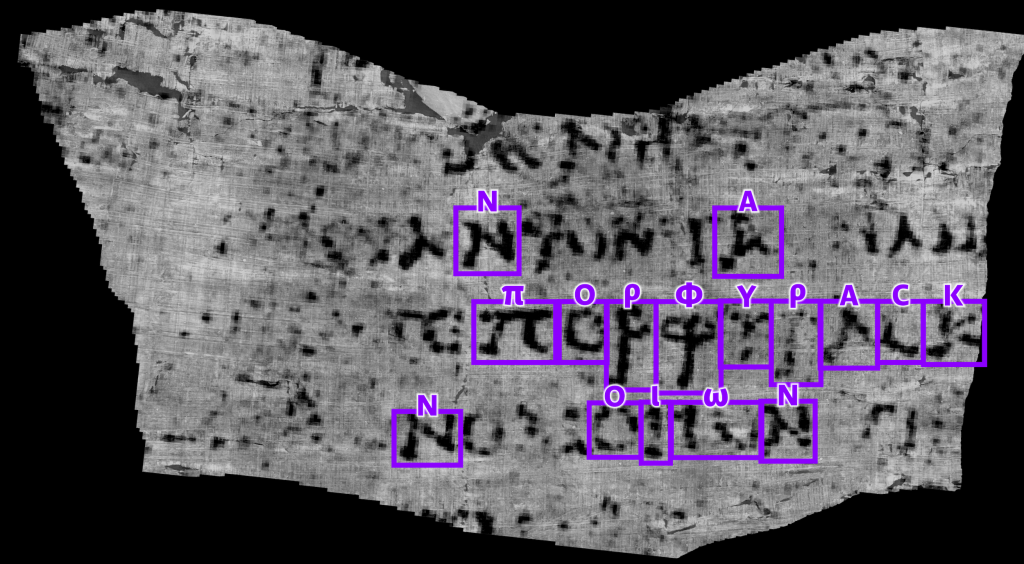
The Greek characters, πορφύραc, revealed as the word “PURPLE,” are among the multiple characters and lines of text that have been extracted. Image: courtesy Vesuvius Challenge.
“The first word to emerge from the scrolls is ‘porphyras,’ ancient Greek for purple, and its decoder is Luke Farritor, [who] was taking part in the Vesuvius Challenge, a machine learning and computer vision competition backed by Silicon Valley money with the goal of accelerating the deciphering of the 2,000-year-old texts. His reward? $40,000.”
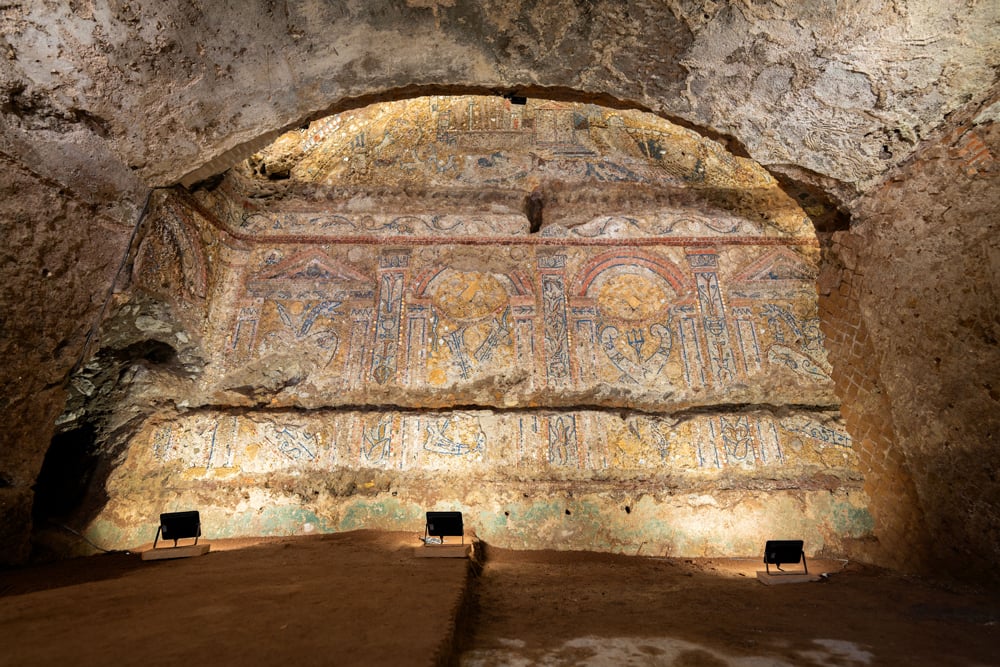
Photo via Italian Ministry of Culture.
“The ‘rustic’ mosaics, found on the grounds surrounding the Colosseum in the heart of the city, date to the late Republican Age, in the last decades of the second century B.C.E., and show a series of figurative scenes… Italy’s Ministry of Culture have said that ‘due to the complexity of the scenes depicted’ and their age, the mosaics are ‘without comparison.’”
More Trending Stories:
Art Dealers Christina and Emmanuel Di Donna on Their Special Holiday Rituals
Stefanie Heinze Paints Richly Ambiguous Worlds. Collectors Are Obsessed
Inspector Schachter Uncovers Allegations Regarding the Latest Art World Scandal—And It’s a Doozy
Archaeologists Call Foul on the Purported Discovery of a 27,000-Year-Old Pyramid
The Sprawling Legal Dispute Between Yves Bouvier and Dmitry Rybolovlev Is Finally Over